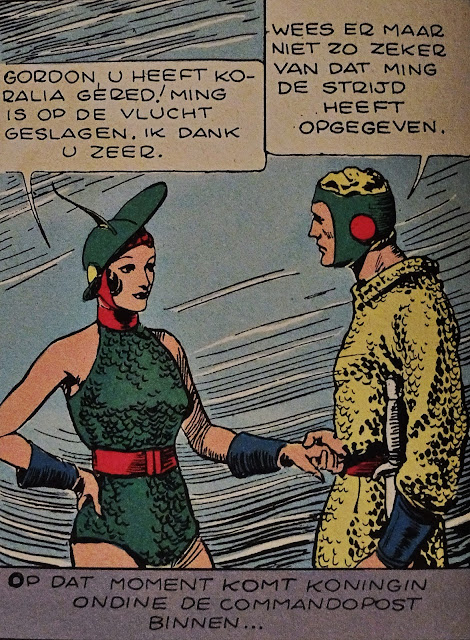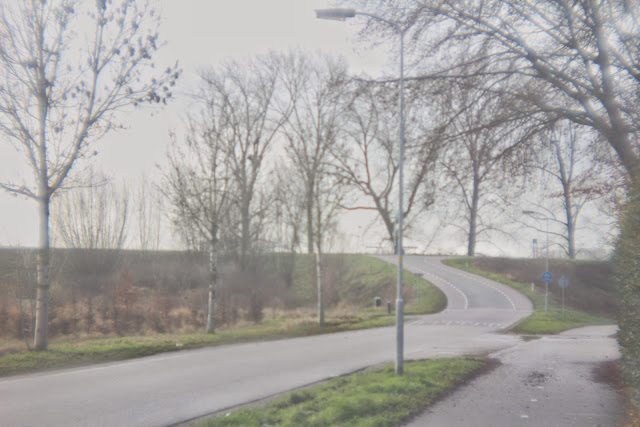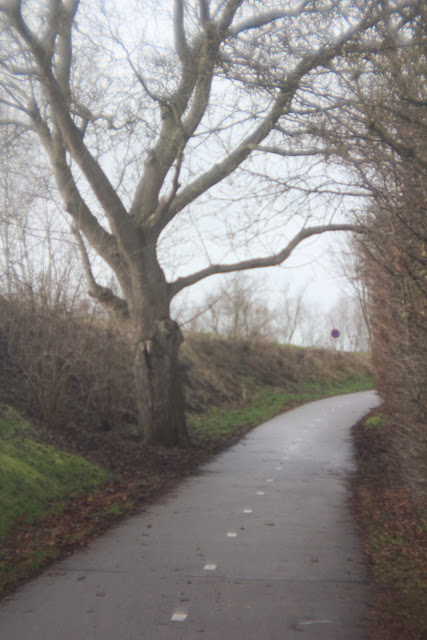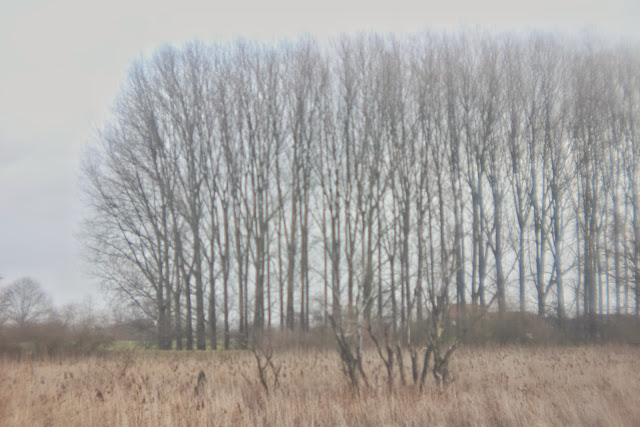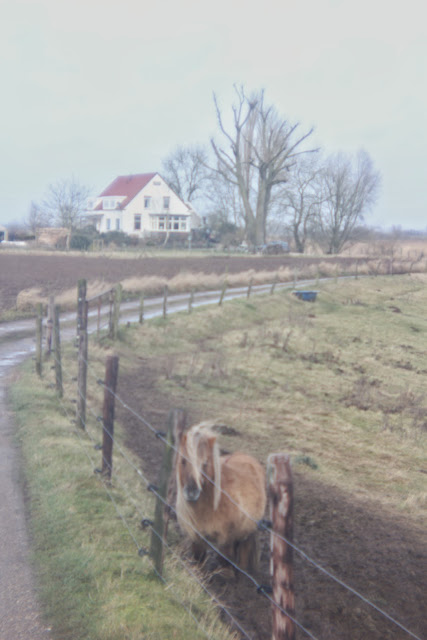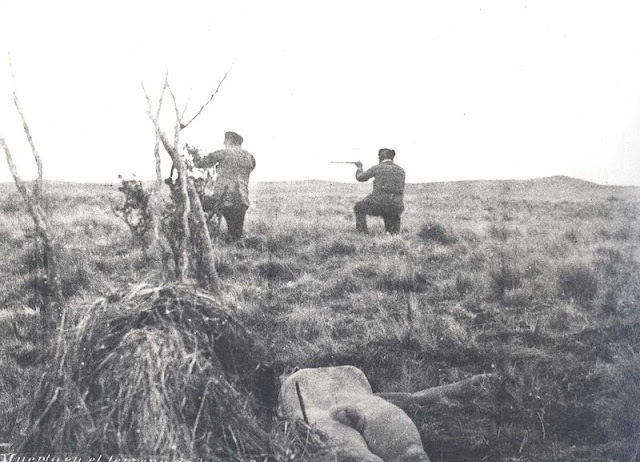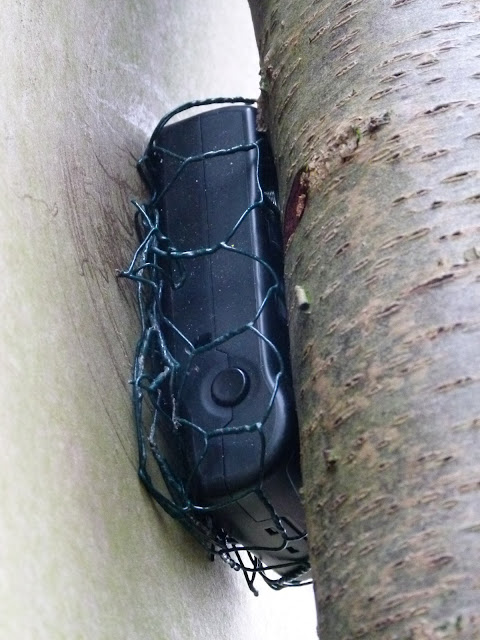30 december 2016
29 december 2016
28 december 2016
27 december 2016
26 december 2016
Jantje lacht
"Simons tweede trip, gefotografeerd door Eddy Posthuma de Boer, februari 1960."
Uit:
Timothy Leary, magier. Het ABZ van de psychedelische avant-garde
Simon Vinkenoog
Sijthoff, 1972
ISBN 90 218 4022 7
Uit:
Timothy Leary, magier. Het ABZ van de psychedelische avant-garde
Simon Vinkenoog
Sijthoff, 1972
ISBN 90 218 4022 7
24 december 2016
23 december 2016
22 december 2016
Dorp A
De eerste vaste bewoners van de hoofdplaats van den Noord Oost-polder, Emmeloord, hebben dezer dagen hun woning betrokken. Het huisraad wordt naar binnen gebracht.
--
Leidsch Dagblad | 20 december 1943 | pagina 2 (2/4)
Emmeloord (Wikipedia):
Emmeloord ontleent zijn naam aan het dorpje Emmeloord op de noordpunt van het voormalige eiland Schokland. Dit eiland lag in de Zuiderzee.
In 1936 werd begonnen met het aanleggen van de dijken om de Noordoostpolder die in 1940 klaar waren. Daarna begon het droogmalen van het gebied dat in 1942 droogviel. Er werd ruim 50.000 hectare land ontgonnen uit het IJsselmeer (de voormalige Zuiderzee). Op 15 december 1943 werd het eerste huis van Dorp A betrokken. De werknaam is later vervangen door Emmeloord. Vanwege de ontginning gedurende de Tweede Wereldoorlog was de Noordoostpolder een dorado voor onderduikers. Veel wegen in het gebied herinneren nog aan deze tijd. Het Erehof Emmeloord is ook een stille getuige van de Tweede Wereldoorlog in de Noordoostpolder.
--
Leidsch Dagblad | 20 december 1943 | pagina 2 (2/4)
Emmeloord (Wikipedia):
Emmeloord ontleent zijn naam aan het dorpje Emmeloord op de noordpunt van het voormalige eiland Schokland. Dit eiland lag in de Zuiderzee.
In 1936 werd begonnen met het aanleggen van de dijken om de Noordoostpolder die in 1940 klaar waren. Daarna begon het droogmalen van het gebied dat in 1942 droogviel. Er werd ruim 50.000 hectare land ontgonnen uit het IJsselmeer (de voormalige Zuiderzee). Op 15 december 1943 werd het eerste huis van Dorp A betrokken. De werknaam is later vervangen door Emmeloord. Vanwege de ontginning gedurende de Tweede Wereldoorlog was de Noordoostpolder een dorado voor onderduikers. Veel wegen in het gebied herinneren nog aan deze tijd. Het Erehof Emmeloord is ook een stille getuige van de Tweede Wereldoorlog in de Noordoostpolder.
Labels:
1943,
Emmeloord,
IJsselmeer,
Leidsch Dagblad,
Schokland,
Zuiderzee
21 december 2016
Jacques Toussele Photographs: box 6 [c 1991] 195 / 247
This photo triggers so many associations, I don't know where to begin. The shirt this lady is wearing looks like a sponsor shirt. I cannot make out all the text, but I see “Lourdes”, “1988” (I think) and “Brandstoffen VDK” (?). Of course my eyes were drawn to the word brandstoffen, Dutch for fuels. There is a company called VDK Brandstoffen, Van den Kerchove Brandstoffen, in Knesselare, Belgium, but I can't find any information about any sponsorships some decades ago.
It's hard to imagine the odyssey this shirt must have made to end up in a photo studio in Mbouda, Cameroon – and the journey the image itself made from “plastic negative”, as it is called on the archive website, to scanned TIFF image, to an uploaded JPG file and to an image projected on my computer screen.
Since the photo was made in 1991, long before things started to leave all sorts of electronic trails, there is no telling what happened to the woman in the portrait. All we know the photo was taken by a photographer called Jacques Touselle of “Photo Jacques” in Mbouda, Western Province, Cameroon, and the 120 negative was stored in what was later known as “box 6”, labelled “01/03/1991”.
Archiving a Cameroonian Photographic Studio - Background
From Dust to Digital: Ten Years of the Endangered Archives Programme - 16. Archiving a Cameroonian photographic studio, David Zeitlyn
Jacques Touselle leaflet (PDF)
20 december 2016
Jacques Toussele Photographs: box 1 [c 1986] 7 / 147
Image and Text Source: EAP054/1: Archiving a Cameroonian photographic studio
"Jacques Toussele commissioned portraits of people from Mbouda, West Cameroon. Many of the photos are of individuals for Identity Cards and other administrative pruposes but also recreataional, family groups etc. The archives represent a record of life in this area in the 1970s and 1980s.
The aim of the project was to help protect the personal photographic archives of Mr J Toussele, a Cameroonian photographer in the town of Mbouda, Western Region, Cameroon. The archives represent a record of life in this area over the past thirty years. Before the project began they were in a poor state of preservation
The economic basis for professional black and white photography in Cameroon disappeared in 1998 with the introduction of new identity cards. They were issued with instant photographs, removing the need for 'passport photographs'. These had been the main work of rural photographers who could process and print the film without needing access to electricity. A small supporting industry of photographers, such as have been celebrated in exhibitions e.g. of the work of Seidou Keita, has effectively been destroyed by computerisation of the identity cards and the arrival of cheaper colour 35mm processing in the cities. One such studio photographer is Jacques Toussele, with a collection of some 20,000 negatives."
"Jacques Toussele commissioned portraits of people from Mbouda, West Cameroon. Many of the photos are of individuals for Identity Cards and other administrative pruposes but also recreataional, family groups etc. The archives represent a record of life in this area in the 1970s and 1980s.
The aim of the project was to help protect the personal photographic archives of Mr J Toussele, a Cameroonian photographer in the town of Mbouda, Western Region, Cameroon. The archives represent a record of life in this area over the past thirty years. Before the project began they were in a poor state of preservation
The economic basis for professional black and white photography in Cameroon disappeared in 1998 with the introduction of new identity cards. They were issued with instant photographs, removing the need for 'passport photographs'. These had been the main work of rural photographers who could process and print the film without needing access to electricity. A small supporting industry of photographers, such as have been celebrated in exhibitions e.g. of the work of Seidou Keita, has effectively been destroyed by computerisation of the identity cards and the arrival of cheaper colour 35mm processing in the cities. One such studio photographer is Jacques Toussele, with a collection of some 20,000 negatives."
“Prince Mbilini”
1860
Photographer: Unknown
Photo & Text Source: Swaziland Digital Archives
This is often claimed to be the first photo of a Swazi, Prince Mbilini, circa 1860. It isn't Mbilini, nor is it Mswati as claimed by Neil Parsons in his A New History of Southern Africa ( p.137). It is a drawing of a photograph and the photograph was reproduced as Mswati in Saunders's Black Leaders in Southern African History (p.62) with National Archives also getting the credit. Ian Knight reproduces it in his There Will be an Awful Row At Home About This (p.39) and identifies the main figure as Ngoza kaLudaba of the Cube.
Mbilini, by the way, was not the heir and certainly died outside the Swazi country - he was mortally wounded by a British patrol whilst on a cattle rustling expedition near Lüneburg in April 1879. S. Bourquin has a photograph of a man he names as Mbilini in his collection. It has been reproduced several times, on p.33 of Ian Knight's Brave Men's Blood, for example, and could well be authentic.
Photographer: Unknown
Photo & Text Source: Swaziland Digital Archives
This is often claimed to be the first photo of a Swazi, Prince Mbilini, circa 1860. It isn't Mbilini, nor is it Mswati as claimed by Neil Parsons in his A New History of Southern Africa ( p.137). It is a drawing of a photograph and the photograph was reproduced as Mswati in Saunders's Black Leaders in Southern African History (p.62) with National Archives also getting the credit. Ian Knight reproduces it in his There Will be an Awful Row At Home About This (p.39) and identifies the main figure as Ngoza kaLudaba of the Cube.
Mbilini, by the way, was not the heir and certainly died outside the Swazi country - he was mortally wounded by a British patrol whilst on a cattle rustling expedition near Lüneburg in April 1879. S. Bourquin has a photograph of a man he names as Mbilini in his collection. It has been reproduced several times, on p.33 of Ian Knight's Brave Men's Blood, for example, and could well be authentic.
19 december 2016
Little Snowdrop
"They were very friendly, however, and inquired her name. 'Snowdrop,' answered she."
Illustration for "Little Snowdrop".
Image source - British Library
Plate opposite page 299
Title of Work - The Fairy Book ...
By the author of “John Halifax, Gentleman” [Dinah Maria Craik]
With 32 illustrations in colour by Warwick Goble.
Artist/creator - Goble, Warwick (Warwick Goble)
Place and date of production - London : Macmillan & Co., 1913
Credit© - The British Library Board
Illustration for "Little Snowdrop".
Image source - British Library
Plate opposite page 299
Title of Work - The Fairy Book ...
By the author of “John Halifax, Gentleman” [Dinah Maria Craik]
With 32 illustrations in colour by Warwick Goble.
Artist/creator - Goble, Warwick (Warwick Goble)
Place and date of production - London : Macmillan & Co., 1913
Credit© - The British Library Board
A_0ii_6874
Photographer E. Hecker in Ovamboland, A_0ii_6874
Image source: Guide to historical photographs from Africa on the web
Image source: Guide to historical photographs from Africa on the web
Drie geslagten in den oorlog, 1900
Mr and Mrs Walt Disney with Mickey Mouse, London
Image and text source - Daily Herald Archive
Creator - Tomlin, Harold
Date - 1935-06-21
Description:
A photograph of Mr and Mrs Walt Disney with Mickey Mouse in London, taken in 1935 by Harold Tomlin for the Daily Herald.
Mickey Mouse was created in 1928 by Walt Disney (1901-1966) and animator Ub Iwerks (1901-1971). Disney based the character on his pet mouse, his original sketches were reworked by Iwerks to make them easier to animate. Walt Disney married Lillian Bounds (1899-1997) in 1925, and she is credited with having named Mickey Mouse.
Creator - Tomlin, Harold
Date - 1935-06-21
Description:
A photograph of Mr and Mrs Walt Disney with Mickey Mouse in London, taken in 1935 by Harold Tomlin for the Daily Herald.
Mickey Mouse was created in 1928 by Walt Disney (1901-1966) and animator Ub Iwerks (1901-1971). Disney based the character on his pet mouse, his original sketches were reworked by Iwerks to make them easier to animate. Walt Disney married Lillian Bounds (1899-1997) in 1925, and she is credited with having named Mickey Mouse.
Abonneren op:
Posts (Atom)




